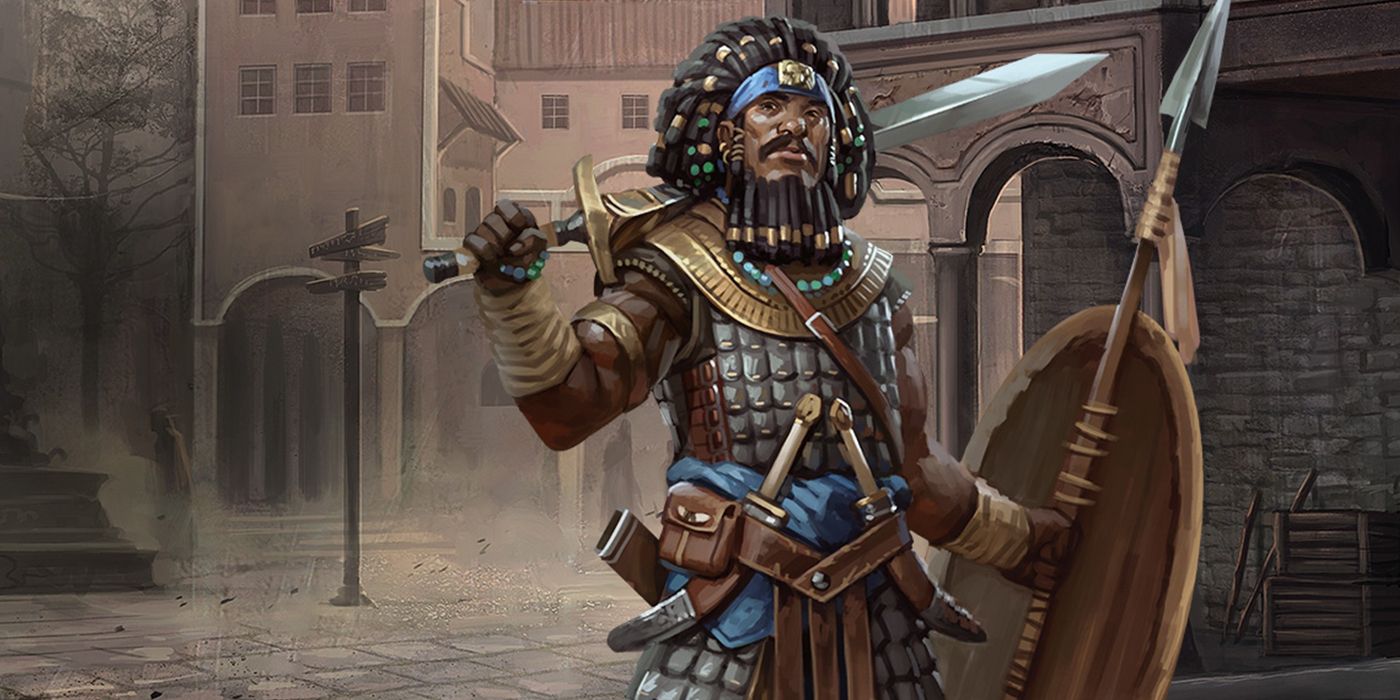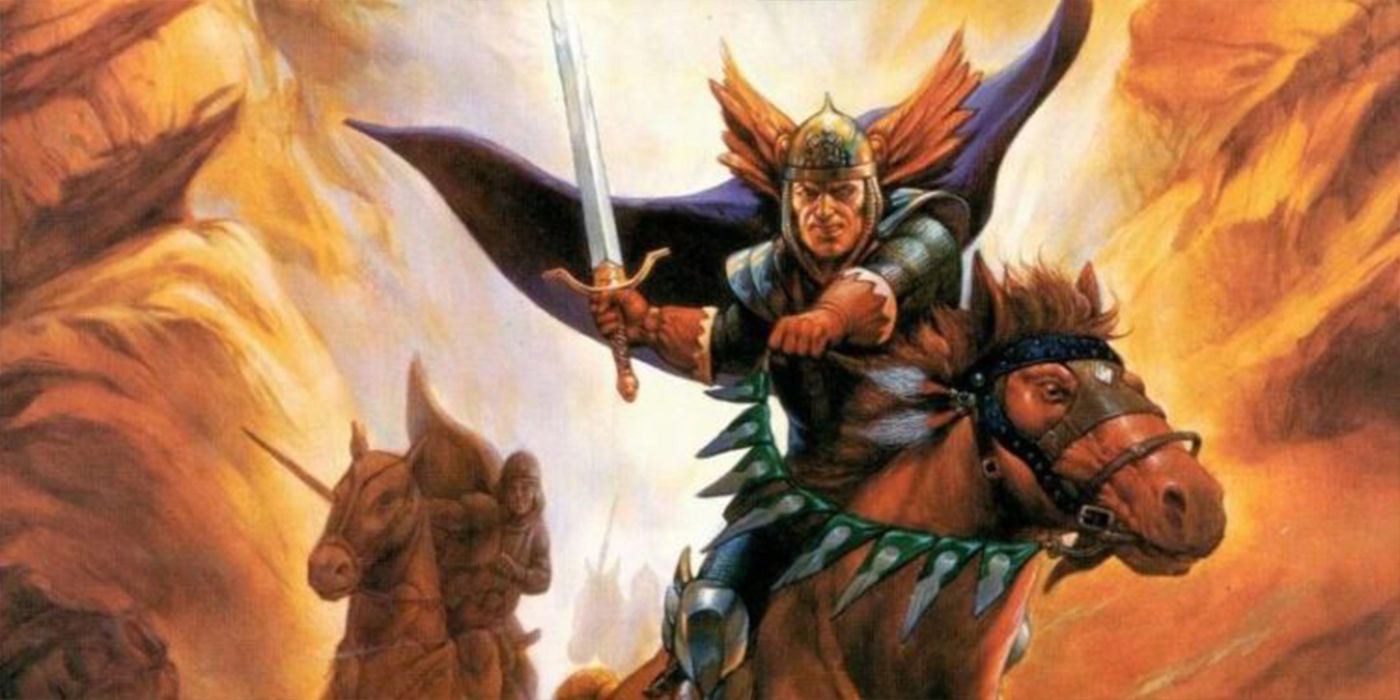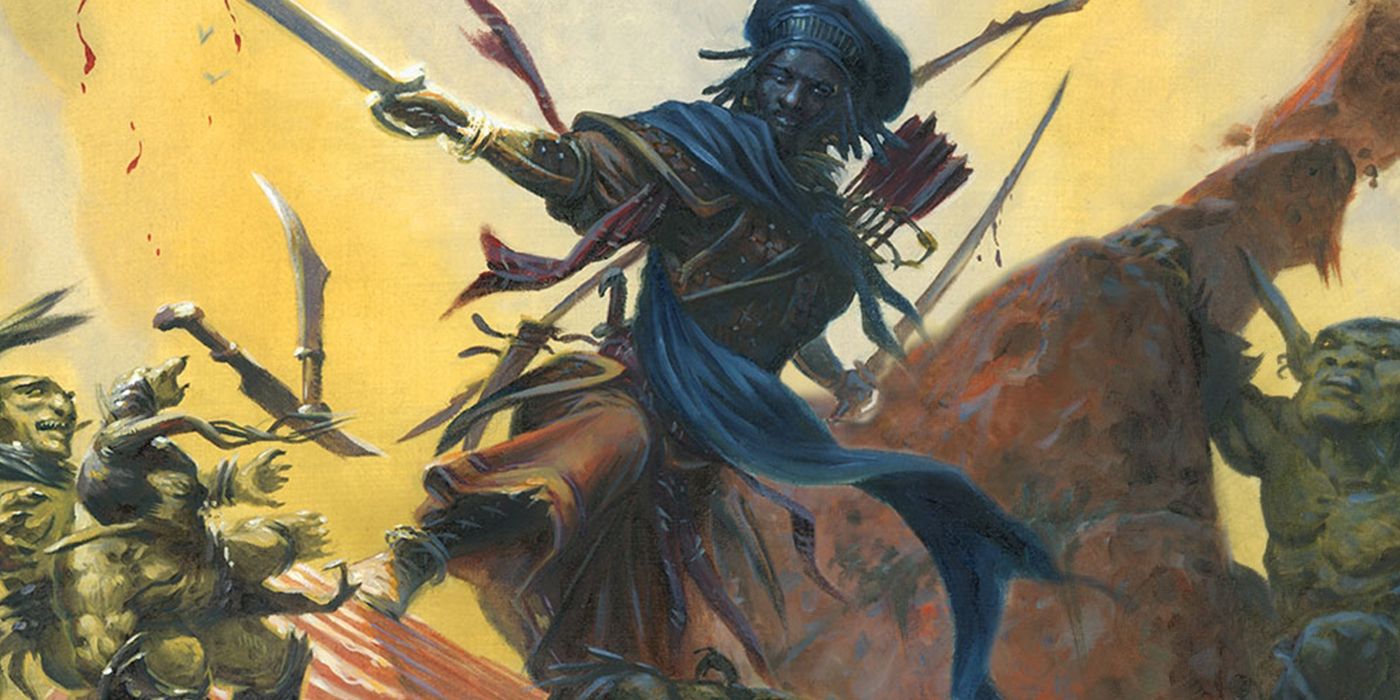Fighters aren't just a classic Dungeons & Dragons class; they're the classic, around when the very first set of rules was called "Men and Magic." There's a good reason fighters have lasted this long without any crazy changes to the class's name or abilities--fighters are good at what they do, and what they do is wade into the fray and keep swinging until every enemy is vanquished.
Fighters are, well, fighters like no other class, even the other martial combat-oriented ones. They aren't exceptionally gifted in any other field, from stealth to healing party members and casting spells, but they're the reason the rest of the party has time to do those things; fighters are front and center, soaking up attention (and damage) with ease.
Still, fighters have a bit of a reputation these days for being basic and over-done, and in some ways, that's true--but that doesn't mean a player interested in trying this class has to be stuck with a "boring" character. In D&D 5th edition, there's a 'best build' formula for more than one style of fighter, so that players with any sort of combat preference can keep things interesting.
Fighting Races
The first step to putting a fighter together is selecting their race. First, let's talk about races that can be found in the base Player's Handbook; of those, dwarves, dragonborn, half-orcs, and elves are the top choices for a strong fighter build.
Dwarves, dragonborn, and half-orcs shouldn't surprise many people by being on this list. All dwarves have a fantastic +2 constitution bonus and poison resistance, but for the best build players should select the mountain dwarf subrace--they get a +2 strength as well. Dragonborn are a physically imposing race with +2 to strength and a handy breath weapon that gives even the most magic-deprived fighter something extra up their sleeve. Half-orcs have relentless endurance and savage attacks to go along with their +2 strength and +1 constitution, so they'll stay up and fighting for a good long time.
People don't generally think of elves as lean, mean fighting machines, but they're actually quite good at it. Wood elves in particular, with their +2 dexterity, are the best choice for either ranged or finesse fighters. Also, variant humans get an honorable mention because they're just good at everything.
Some people may want to expand their horizons a little and play a less well-known class, and there are several great options in other 5e sourcebooks too. Goliaths, bugbears, tritons, and warforged also make for fantastic fighters too; goliaths, as half-giants, get a nice +2 strength and +1 constitution, plus the Stone's Endurance ability and proficiency in athletics for free.
Bugbears are a monstrous goblinoid race with ability bonuses that line up perfectly for a strength-based fighter, while the underwater-dwelling triton race gets strength and constitution bonuses to go with a swim speed, the ability to breathe underwater and talk to water creatures, and cold resistance. That last one is great for players who basically want to be Aquaman. Finally, warforged are a mechanical race originating in the Eberron setting, with tons of cool perks for a fighter in addition to ability bonuses, resistance to poison and immunity to disease.
Ability Scores
A fighter's ability scores are pretty straightforward. The fighter's combat ability is based on either strength or dexterity (players' choice), so depending on which weapons and style the player is looking to use, one of those must be the top stat. The second most important stat is also a clear choice: constitution determines the character's hit point total, and fighters need all the hit points they can get. Third and fourth in importance will be wisdom and whichever stat between strength and dexterity isn't the fighter's chosen primary ability. Then, charisma can come second to last, and intelligence can--predictably--be the dump stat.
However, the formula changes a little for a subclass like the eldritch knight; for players tired of the "big dumb fighter" trope and looking to mix a little magic into their fighting, the eldritch knight is one of the best fighter subclasses available. It also requires the fighter's intelligence to be on par (or higher) with constitution, as intelligence will determine the fighter's spellcasting ability.
Martial Archetypes
Martial archetypes are the fighter's available subclasses, and there are seven to choose from: arcane archer, battle master, cavalier, champion, eldritch knight, purple dragon knight (aka banneret), and samurai. However, this guide will focus on the three subclasses best-suited to a different type of combat each--the arcane archer for ranged attacking, the eldritch knight for a flexible fighter who can do finesse, magic, and heavy weapons, and finally the battle master; the ultimate example of a heavy-hitting and battlefield control.
Arcane archers may be the only subclass specifically suited to range weapons, but players shouldn't let that fool them: it's also just a really strong fighter subclass. These fighters are masters of ranged weaponry, dealing the high amounts damage expected of fighters from a distance with their vast list of arcane shots. Much like battle masters, they're also in a position to take command of a battlefield more than other fighter subclasses.
Eldritch knights are the up-close and personal version of the arcane archer for those who don't want to multiclass into wizard; they can wield pretty much any type of weapon be it a finesse weapon or a heavy old greatsword, and they've got the advantage of arcane spells to buff them and their allies. That means they're dangerous at any range--and range also isn't as much of an obstacle for them, as eldritch knights are exceedingly mobile. With a simple Misty Step spell, they can teleport thirty feet in any direction in the heat of battle.
Battle masters are the tough warrior that most people picture when they think of fighters (without being as old and overused as the champion subclass). No other fighter subclass is as effective at melee crowd control, and the battle master's ability to learn about their enemies also allows them to increase the damage they deal out. Playing a battle master will require some tactical thinking to make the best use of them, but it's well worth the effort.
Skills and Feats
Before starting a game, players should also know which skills to get proficiency in. Of the skills that come with the fighter class, players will want to make sure they've got proficiencies in athletics, perception, and intimidation. However, there are also a few non-class skills that should be considered: dex-based fighters will also want stealth, and both arcane archers and eldritch knights might want arcana. If players still have a proficiency option to pick after all that, then investigation and deception are both just generally handy skills to have.
As players level up, they'll need to pick out feats for their fighter. The Great Weapons Master feat is as close to mandatory as it gets for the general fighter class, granting a free bonus action attack on a kill or crit and the ability to increase damage by decreasing accuracy. Alert is another good one for any class, as being high in the initiative order is handy. Beyond that, it gets more subclass-specific.
Eldritch Knights should grab War Caster, for advantage on constitution saves and the ability to cast spells with both hands full. For arcane archers, Sharpshooter is absolutely mandatory, as it's the ranged equivalent of Great Weapons Master. Ranged fighters using a crossbow specifically will also need Crossbow Expert. Finally, the battle master fighter should grab the Sentinel feat, making them top-tier defenders with an extra reaction to strike at enemies.
Combining all of that with a character background like Criminal and Urchin would be perfect for a dexterity-based fighter, while Soldier, Sailor, and Outlander make good picks for those with a strength base. Once all final touches are applied to the fighter, they should be all ready to take on the waves of enemies that any Dungeons & Dragons campaign will surely throw at them.



